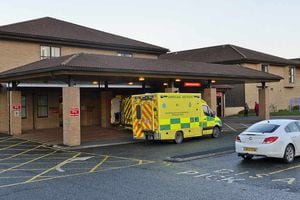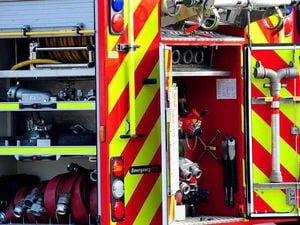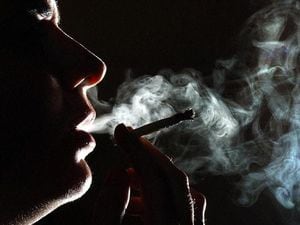Pressure on A&E hits operations
Pressure on accident and emergency departments has led to a dramatic increase in the number of cancelled operations at Shropshire's two main hospitals.

A total of 561 operations were cancelled from October to January. In the same period the year before 158 operations were cancelled due to a lack of available beds.
However, the number of patients being seen within the target four hours in accident and emergency has shot up by eight percentage points in a week, figures have shown.
The 89.1 per cent figure is the highest achieved by the Shrewsbury and Telford Hospitals NHS Trust since 90.5 per cent of A&E patients were seen, treated or admitted in November last year. It spells a good week for the trust with the number of planned operations cancelled and the number of ambulances queuing at the hospitals falling.
Eight planned operations were cancelled, down by five from the week before and below the national average of 9.3.
But it is the 22nd week in a row the trust, which runs the A&E departments at the Princess Royal Hospital in Telford and the Royal Shrewsbury, has missed the Government's target of 95 per cent of patients being seen within four hours.

Debbie Kadum, chief operating officer at the Shrewsbury and Telford Hospital NHS Trust, said: "We understand how frustrating having a planned operation can be, particularly if it is cancelled at very late notice. We never take the decision to cancel operations lightly.
"As has been widely reported, the health service in Shropshire has seen very high demand for its services throughout the winter, with an increase in the number of people attending our A&Es and in the number of emergency admissions, as well as an increase in the number of patients who need support with their discharge from hospital.
"Unfortunately, this does mean that on occasion, non-urgent operations have been cancelled to give priority to emergency admissions.
"Our priority is to make sure people have timely access to safe, high quality services when they need them. The local NHS is working closely together, and with social care partners, to keep these situations to a minimum."
Shropshire's two A&Es saw 1,987 people through their doors in the week leading up to last Sunday – the latest figures available. That number is down by 40 on the week before, suggesting pressure on the under-siege A&Es could be easing slightly.
Of those people, 407 were admitted.
The 89.1 per cent figure equates to 216 people waiting longer than four hours to be seen, treated, admitted or discharged at the A&E units. That figure is down by 167 on the previous week and is below the England average of 230, which itself dropped last week.
The national percentage figure, according to the new statistics, is 87.7 per cent - down from 91.6 per cent the week before, meaning the Shropshire trust has bucked the English trend.
There are current just 26 hospital trusts in the country meeting the 95 per cent gold standard, with 114 major A&E trusts missing it.
Nationally, it is the 21st week in succession that the goal of 95 per cent has been missed.
The number of ambulance "queuing" outside the hospital – those waiting at least half an hour to transfer a patient into the care of hospital staff – was also down on the week before by 20 to 37.
But there was a rise in the number of delayed discharges in the county in the week leading up to last Sunday, where a hospital is unable to release a patient despite their treatment being completed because of a lack of support available in the community.
In Shropshire the number was up by 78 to 259. The problem has been highlighted as a key reason for hospitals struggling in the New Year as the delays mean the flow of patients through the hospital system slows.
And it was not such good news from the county's A&Es with the number of beds unavailable during the week to diarrhoea and vomiting or norovirus-like symptoms increasing by eight to 60.





